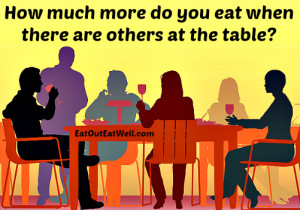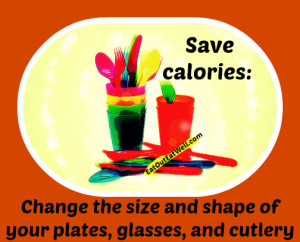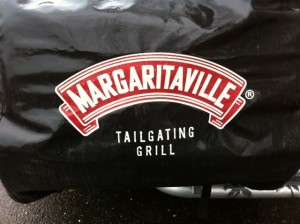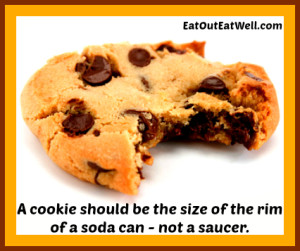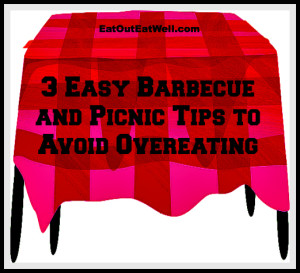How many people do you usually sit with when you’re eating? Not all the people surrounding you in a cafeteria or restaurant, but the number of friends or family at your table?
Amazingly, the number of people you eat with can make a big difference in how much you end up eating. If you have eight people at your table you might end up eating 96% more than if you ate alone!
That’s not to say that you should limit the number of friends you eat with—it should just make you aware that friends, unintentionally, can influence how much and how fast you eat.
How Come?
You tend to eat for a longer amount of time — and eat more — when you’re with people you like compared to when you eat alone. It could be because you mindlessly nibble while someone else talks, or you’re using the good manners you were taught in fifth grade about not letting someone else eat alone, or maybe you’re just having fun and enjoying your food. Whatever the reason, most of us tend to stay at the table longer when we’re with others –and– the longer you stay at the table, the more you eat.
We also tend to mimic the other people at the table. It’s almost as though how much you eat and how fast you eat is contagious. If your friends eat fast, you eat fast. If they eat a lot, you eat a lot.
Friends and family influence how much we eat, too. Sometimes you get so involved in conversation that all monitoring of what you pop into your mouth goes out the window. Have you ever looked down at your plate and wondered where all the cookies went or how you managed to work your way through the mile high dish of pasta or the four pieces of pizza? How many tastes did you take of everyone else’s meal and dessert? Those tastes aren’t like invisible ink. Those calories count, too.
How Much More Do We Eat When We’re With Others?
In his book, Mindless Eating, Brian Wansink, PhD reports on a study that shows how strong the tendency is to increase how much you eat when you eat with others. Compared to eating alone, you eat, on average:
- 35% more if you eat with one other person
- 75% more with four at the table
- 96% more with a group of seven or more
What’s The Reason?
It’s a common pattern for adults to eat more when they’re in larger groups than when they’re eating alone. One reason is a phenomenon called “social facilitation,” or the actions or behaviors that result from the sight and sound of other people doing the same thing that you’re doing. When you’re eating in groups, social facilitation can help override your brain’s normal signals of satiety.
What You Can Do
- Think about who you’re eating with – and why. If you want to have a blast and don’t care about how much you eat – eat with a big group and chow down.
- If you want to be careful about what and how much you eat, think about eating lunch with your salad (dressing on the side, please) friends rather than the pepperoni pizza group.
- Without even thinking about it, you tend to adjust your eating pace to that of your companions. So, sit next to the slow eaters rather than the gobblers if you’re trying to control how much goes into your mouth.
